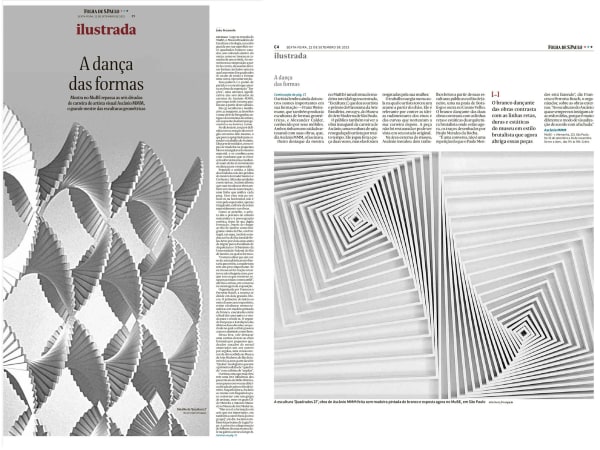Ascânio MMM
Ascânio MMM is one of the leading artists in the trajectory of geometric abstraction in Latin America. His sculptures are built on the principles of Mathematics, specifically the possibilities of geometric configurations. Repetition and precision are essential elements in the work process, regardless of scale or the material, the result is often a meeting between the rigor of constructivism and the illusion of optical art.
-
 Prisma 7, 2021Mais detalhes
Prisma 7, 2021Mais detalhes -
 Quacors 40, 2021Mais detalhes
Quacors 40, 2021Mais detalhes -
 Quasos/Poligonal 1, 2019Mais detalhes
Quasos/Poligonal 1, 2019Mais detalhes -
 Quacors 6, 2019Mais detalhes
Quacors 6, 2019Mais detalhes -
 Quasos 14, 2016Mais detalhes
Quasos 14, 2016Mais detalhes -
 Qualas 14, 2016Mais detalhes
Qualas 14, 2016Mais detalhes -
 Quasos 3, 2014Mais detalhes
Quasos 3, 2014Mais detalhes -
 Quasos 1, 2014Mais detalhes
Quasos 1, 2014Mais detalhes -
 Flexos 6.3, 2007Mais detalhes
Flexos 6.3, 2007Mais detalhes -
 Piramidal 32.2, 1999-2020Mais detalhes
Piramidal 32.2, 1999-2020Mais detalhes -
 Piramidal 33, 1999Mais detalhes
Piramidal 33, 1999Mais detalhes -
 Fitangular Ipê 1, 1985Mais detalhes
Fitangular Ipê 1, 1985Mais detalhes -
 Placas XIV (Múltiplo 46), 1981-2000Mais detalhes
Placas XIV (Múltiplo 46), 1981-2000Mais detalhes -
 Formação 20, 1979Mais detalhes
Formação 20, 1979Mais detalhes -
 Formation Two, 1978Mais detalhes
Formation Two, 1978Mais detalhes -
 Escultura 2, 1972Mais detalhes
Escultura 2, 1972Mais detalhes -
 Modulo 8 (Múltiplo 10), 1971-1977Mais detalhes
Modulo 8 (Múltiplo 10), 1971-1977Mais detalhes -
 Módulo 8.3, 1971Mais detalhes
Módulo 8.3, 1971Mais detalhes -
 Triangles 7, 1969-2009Mais detalhes
Triangles 7, 1969-2009Mais detalhes -
 Squares 27, 1968-2008Mais detalhes
Squares 27, 1968-2008Mais detalhes -
 Qualas 1Mais detalhes
Qualas 1Mais detalhes
Born in Fão, Portugal, in 1941, Ascânio has been living and working in Rio de Janeiro since 1959. His formal education includes the Escola Nacional de Belas Artes [National School of Fine Arts] between 1963 and 1964 and the Architecture and Urbanism College at Rio de Janeiro’s Federal University (FAU/UFRJ) from 1965 to 1969, where he graduated.
He worked as an architect until 1976, on such projects as the signaling and duplication of Vale’s Vitória-Minas railway – during this project he lived in Vitória for three years.
Ascânio started developing his artistic work in 1966, when he was still at the Architecture and Urbanism College, and later along with his work as an architect. In that same year he showed his work for the first time to the public, at the Salão de Abril at Museu de Arte Moderna do Rio de Janeiro [April Exhibition at Rio de Janeiro’s Modern art Museum]. The boxes – wooden cubes on which the spectator can move different sized squares, making diverse drawings – are from this period.
The relationship among sculpture, Mathematics and Philosophy became a central matter in his work during the 1970s. In this period, from an axis, he explored progressions in vertical and horizontal twists, using wooden slats painted in white.
In the 1980s, with reliefs and sculptures Fitangulares, he became interested in raw wood; white, light and shadow were not the main issue anymore. He began to explore different species of wood and their natural colors (cedar, mahogany, and other South American wood such as salmwood, Ipe and Pau-marfim). In the late 1980s he made the first Piramidais in wood.
In the 1990s the issue of great dimensions became a core matter to Ascânio, and the research on aluminum profiles intensified. Aluminum became, thus, the basis for the creation of new works, always using module. This phase’s sculptures are characterized by aluminum tubes cut into rectangles, which generate great dimension sculptures with hollows and sequences of transparencies and opacities, making them almost immaterial depending on the viewer’s position.
In the 2000s Ascânio develops Flexos e Qualas. In the first works, the bolts used on Piramidais were replaced by stainless steel wire that tied the centimeter tubes together, making a flexible mesh. In Qualas the wire was replaced by rings, resulting in a mesh “that crosses the sight, the light, the wind”.
In the 2010s, with Quasos, Ascânio remains focused on aluminum and its possibilities, and starts reversing the traditional logic behind the use of bolts. These works have twists and bends that result from the deconstruction of the geometric mesh, introducing the matter of unpredictability into his works. Color was used again, but in a subtle way.
Ascânio’s artistic production was the object of study and critical analysis by Paulo Herkenhoff in the book Ascânio MMM: Poética da Razão [Ascânio MMM: The Poetics of Reason] (BEĨ publishing, 2012). In 2005 Ascânio MMM (Andrea Jakobsson publishing, 2005) was published with passages by Paulo Sergio Duarte, Lauro Cavalcanti, Fernando Cocchiarale e Marcio Doctors.
The artist’s work is in important public and private art collections in Brazil and abroad, and has been exhibited at the São Paulo Biennial (1967 and 1979) and at Panorama da Arte Brasileira [Panorama of Brazilian Art] (1970, 1972, 1975 e 1985), among other important collective and individual exhibitions, such as: MAM RJ, Paço Imperial, Palácio das Artes, Dominique Lévy Gallery, Museo de Arte Contemporáneo de Buenos Aires, Argentina; MAR - Museu de Arte do Rio, Rio de Janeiro; Instituto Valenciano de Arte Moderno, Valência (Spain); Panorama da Arte Brasileira in 2008, MAM SP, Arte como Questão - Anos 70, Tomie Ohtake Institute, São Paulo, Itaú Cultural Institute, São Paulo, I Mercosul Biennial, Porto Alegre (RS), MAC SP, Barbican Center, London, MASP SP, Calouste Gulbenkian Foundation, Lisbon, among others.
-

Ascânio MMM: Prisma e Quacors
Casa Triângulo, São Paulo, Brazil 28 September - 14 November 2019Ascânio MMM: Constructive Universality and the Contingency of Perception The spatial pieces by Ascânio MMM have a public vocation, arising from their essential link to the constructive tradition and, more...Read more -

Ascânio MMM: Bodily Measures
Casa Triângulo, São Paulo, Brazil 14 September - 22 October 2016Ascânio MMM: bodily measures 1. Harmonious proportions Brazilian art critique and art history has given Ascânio MMM's oeuvre short shrift. However, this omission has now been partly remedied by the...Read more
-

Ascânio MMM . Ensaios sobre o MASP: Geometrias
MASP - Edifício Pietro Maria Bardi, SÃO PAULO, BRAZIL 28 MARCH 2025 - 03 AUGUST 2025GROUP CURATED BY ADRIANO PEDROSA, REGINA TEIXEIRA AND MATHEUS DE ANDRADE 28 MARCH 2025 - 03 AUGUST 2025Read more -

ASCÂNIO MMM . GEOMETRIA INQUIETA
CASA ROBERTO MARINHO, RIO DE JANEIRO, BRAZIL 14 DECEMBER 2024 - 30 MARCH 2025SOLO CURATED BY LAURO CAVALCANTIRead more -

ASCÂNIO MMM . GRID
MUSEU OSCAR NIEMEYER, CURITIBA, BRAZIL . 07.07.2022 - 29.01.2023 21 December 2023SOLO CURATED BY FELIPE SCOVINORead more -

ASCÂNIO MMM . TORÇÕES
MUBE - MUSEU BRASILEIRO DE ESCULTURA E ECOLOGIA, SÃO PAULO, BRAZIL . 23.09.2023 - 19.11.2023 19 September 2023SOLO CURATED BY FRANCESCO PERROTTA-BOSCHRead more -

ANTONIO HENRIQUE AMARAL AND ASCÂNIO MMM . MUSEU-ESCOLA-CIDADE: O MAM RIO EM CINCO PERSPECTIVAS
MUSEU DE ARTE MODERNA RIO, RIO DE JANEIRO, BRAZIL . 27.05.2023 - 03.12.202 24 June 2023GROUPRead more -

ASCÂNIO MMM . ASCÂNIO MMM: POR UMA GEOMETRIA DEFLAGRATÓRIA
SILVIA CINTRA +BOX4, RIO DE JANEIRO, BRAZIL . 16.03.2023 - 29.04.2023 4 May 2023SOLO CRITICAL ESSAY BY DIEGO MATOSRead more -

Ascânio MMM and Sandra Cinto . Estado Bruto
Museu de Arte Moderna, Rio de Janeiro, Brazil 6 May 2021Curated by Beatriz Lemos, Keyna Eleison and Pablo Lafuente, the exhibition Estado Bruto brings together three-dimensional works selected from collections of the Museum of Modern...Read more -

Ascânio MMM . Latinoamerica: Volver Al Futuro
Museo de Arte Contemporáneo, Buenos Aires, Argentina. 6 April 2018Latinoámerica: volver al futuro goes through a topography of unsuspected connections between regional modernizing projects and contemporary artistic practices. From the concrete works of the...Read more -
![Ascânio MMM . Praça da Sé [Public work]](data:image/gif;base64,R0lGODlhAQABAIAAAAAAAP///yH5BAEAAAAALAAAAAABAAEAAAIBRAA7)
Ascânio MMM . Praça da Sé [Public work]
Prefeitura de São Paulo, Brazil 6 September 2017São Paulo is granted with the public sculpture Praça da Sé by Ascânio MMM. Donated by Itaú Cultural, the work had been commissioned by then-Mayor...Read more -

Ascânio MMM . Antropofagia y Modernidad: Arte brasileño en la colección Fadel
Museo de Arte Latinoamericano de Buenos Aires, Buenos Aires, Argentina 25 November 2016Ascânio MMM takes part in the exhibition Antropofagia y Modernidad: Arte Brasileño en la Colección Fadel , curated by Victoria Giraudo, at the Museo de...Read more
-

ASCÂNIO MMM . by joão parassolo . ILUSTRADA . FOLHA DE SÃO PAULO
22 September 2023
-
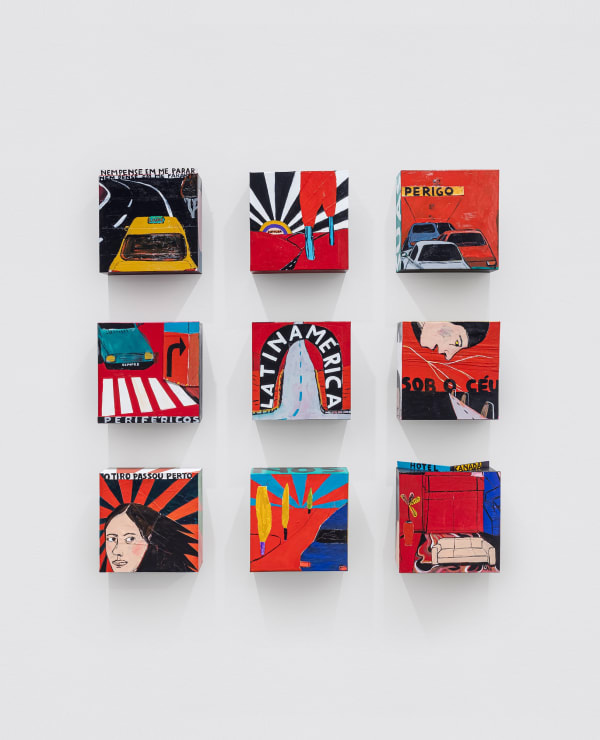
SP-Arte 2025
2 - 6 April 2025Read more -
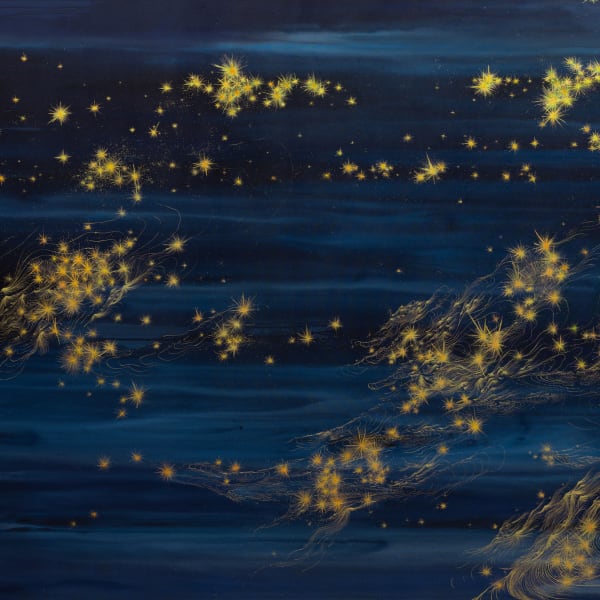
ART BASEL MIAMI BEACH 2024
MIAMI BEACH CONVENTION CENTER, MIAMI, USA 4 - 8 December 2024Read more -
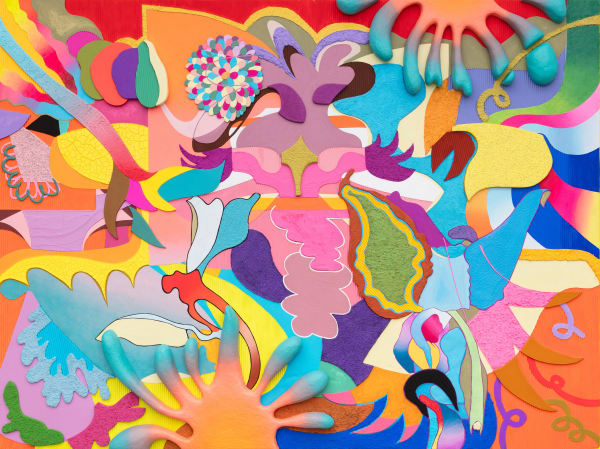
ARTRIO 2024
MARINA DA GLÓRIA, RIO DE JANEIRO, BRAZIL 25 - 29 September 2024Read more -

ARPA 2024
COMPLEXO DO PACAEMBÚ, São Paulo, BRAZIL 26 - 30 June 2024Read more -
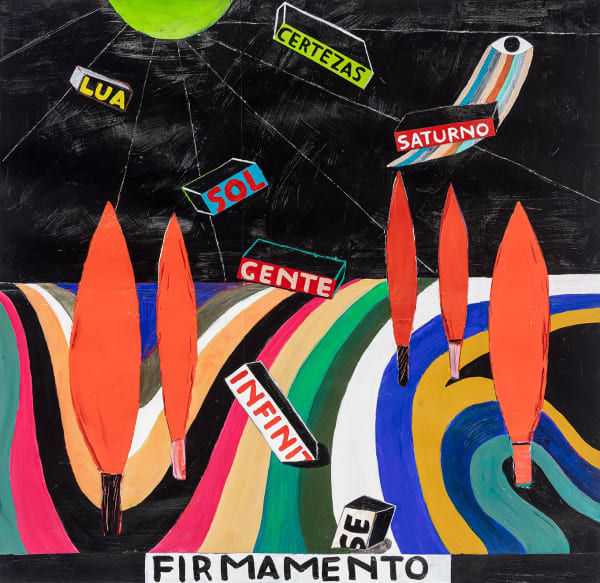
SP-ARTE 2024
PAVILHÃO DA BIENAL, SÃO PAULO 3 - 7 April 2024Read more -

ART BASEL MIAMI BEACH 2023
MIAMI BEACH CONVENTION CENTER, MIAMI, USA 6 - 10 December 2023Read more -

ARTRIO 2023
MARINA DA GLÓRIA, RIO DE JANEIRO, BRAZIL 13 - 17 September 2023Read more -

SP-ARTE 2023
PAVILHÃO DA BIENAL, SÃO PAULO, BRAZIL 29 March - 2 April 2023Read more -
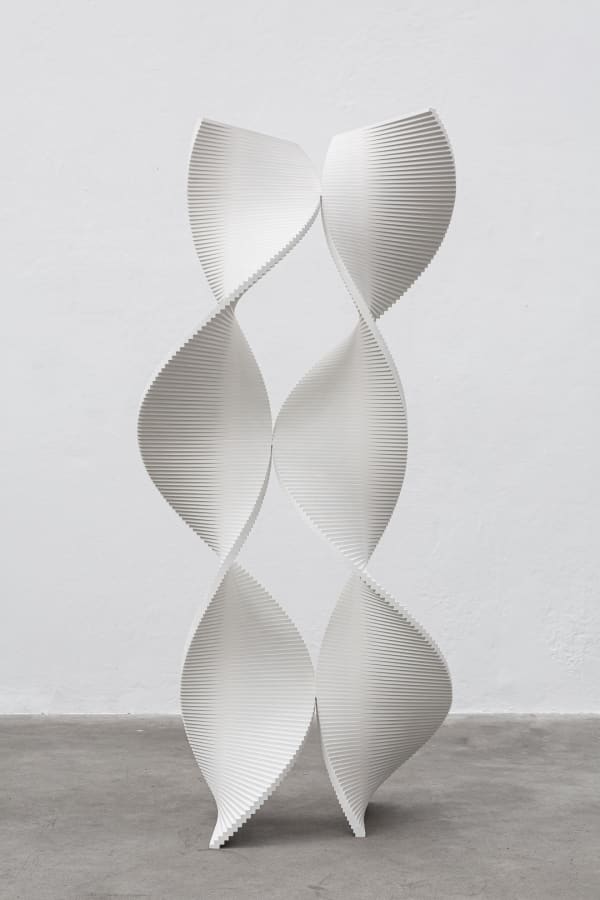
ART BASEL MIAMI BEACH 2022
MIAMI BEACH CONVENTION CENTER, MIAMI, USA 29 November - 3 December 2022Art Basel Miami Beach 2022 . Galleries and Kabinett . Featured Artists: Antonio Henrique Amaral, Assume Vivid Astro Focus, Eduardo Berliner, Fernanda Galvão, Lucas Simões,...Read more -

ARTRIO 2022
MARINA DA GLÓRIA, RIO DE JANEIRO, BRAZIL 14 - 18 September 2022Read more -

SP-ARTE 2022
PAVILHÃO DA BIENAL, SÃO PAULO, BRAZIL 4 - 10 April 2022Read more -

ART BASEL MIAMI BEACH 2021
MIAMI BEACH CONVENTION CENTER, MIAMI, USA 30 November - 4 December 2021Art Basel Miami Beach 2021. Booth G22. Kabinett: Antonio Henrique Amaral Featured artists: Ascânio MMM, Eduardo Berliner, Juliana Cerqueira Leite, Mariana Palma,O Bastardo, Sandra Cinto,...Read more -

SP-ARTE 2021
ARCA, SÃO PAULO, BRAZIL 20 - 24 October 2021Read more -

ARTRIO 2020
ONLINE ART FAIR 14 - 18 October 2020Read more -

ARTRIO 2020
ONLINE ART FAIR 8 - 12 September 2020Read more -
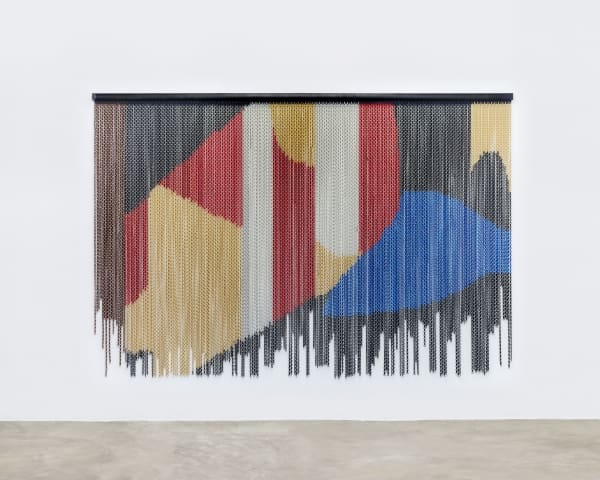
SP-ARTE 2020
PAVILHÃO DA BIENAL SÃO PAULO, BRAZIL 1 - 5 April 2020Read more -
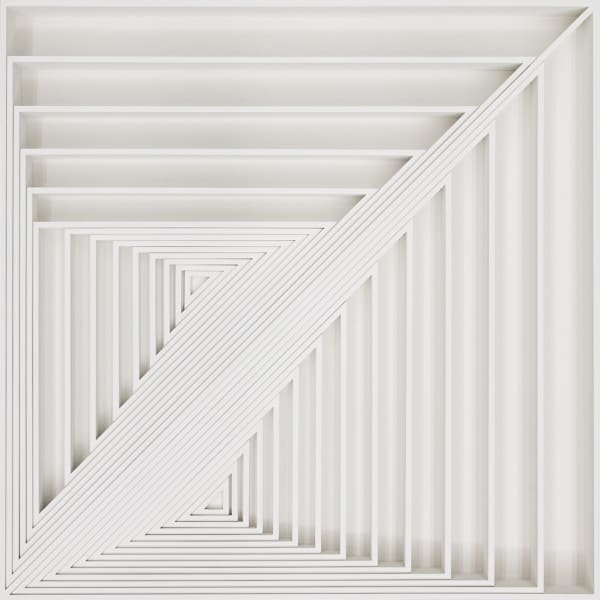
ART BASEL MIAMI BEACH 2019
CONVENTION CENTER MIAMI, EUA 4 - 8 December 2019Read more -
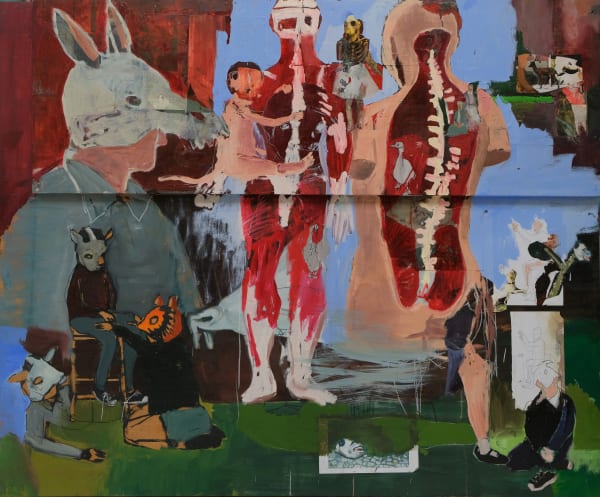
ARTRIO 2019
MARINA DA GLÓRIA RIO DE JANEIRO, BRAZIL 18 - 22 September 2019Read more -
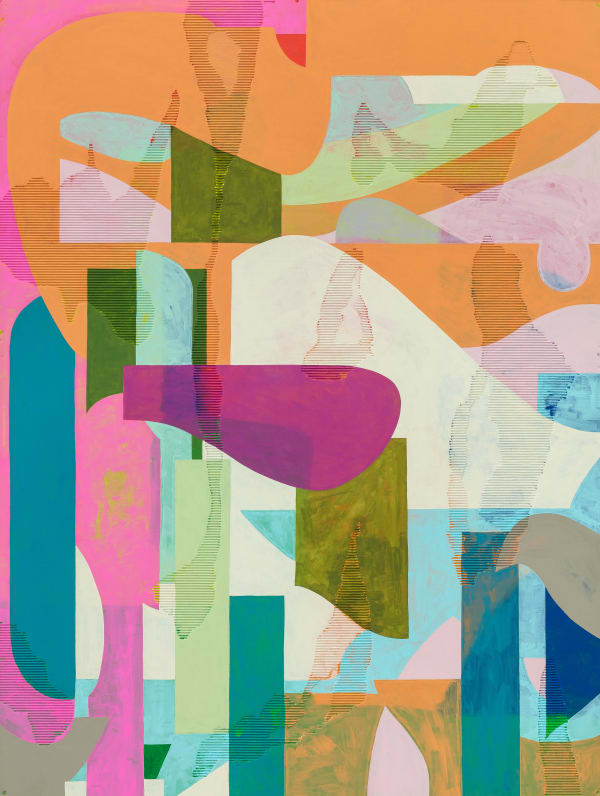
SP-ARTE 2019
PAVILHÃO DA BIENAL SÃO PAULO, BRAZIL 3 - 7 April 2019Read more -
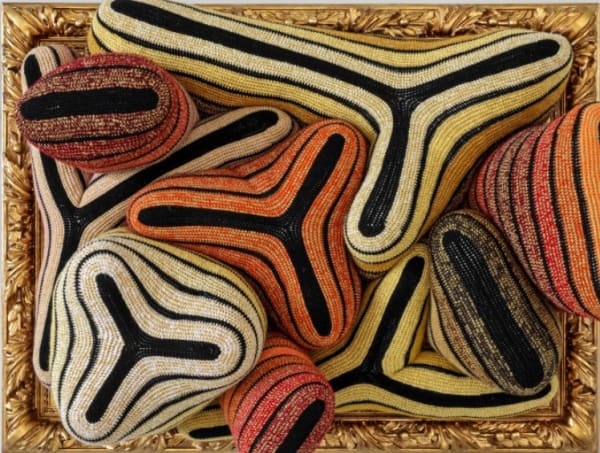
ARCO MADRID 2019
PARQUE FERIAL JUNA CARLOS I MADRID, SPAIN 27 February - 3 March 2019Read more -
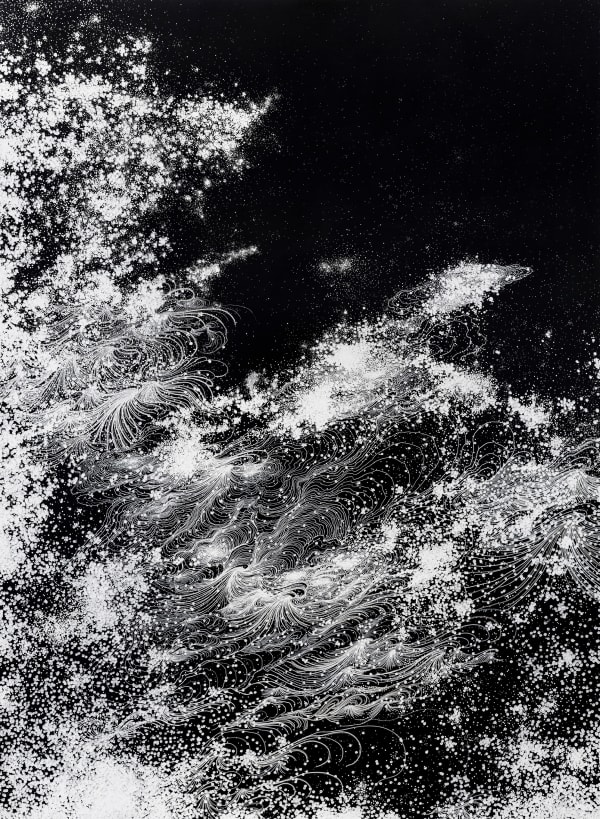
ART BASEL MIAMI BEACH 2018
CONVENTION CENTER MIAMI, USA 6 - 9 December 2018Read more -

ARTRIO 2018
MARINA DA GLÓRIA RIO DE JANEIRO, BRASIL 27 - 30 September 2018Read more

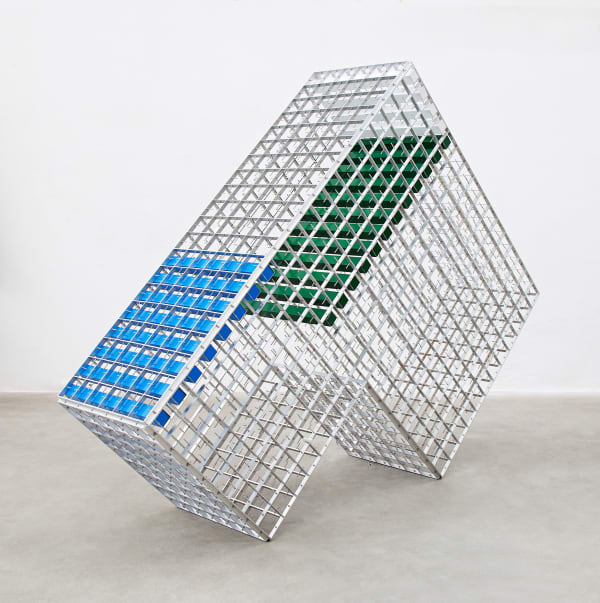







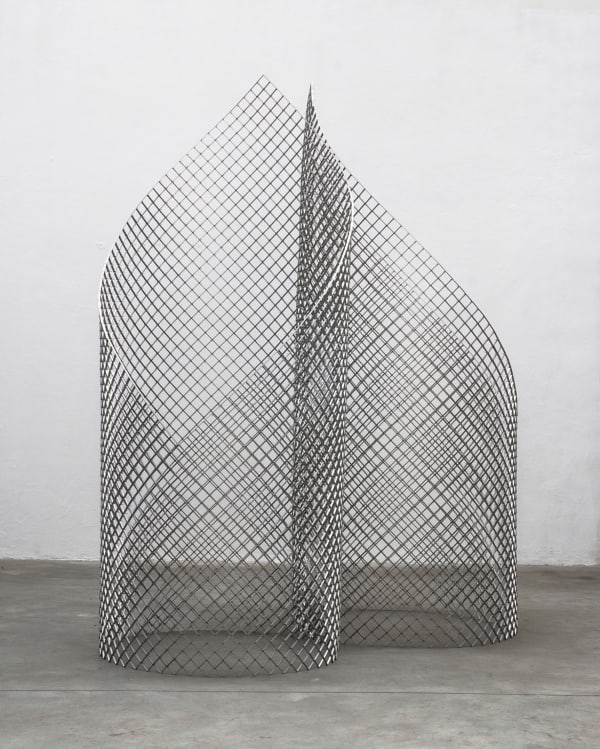








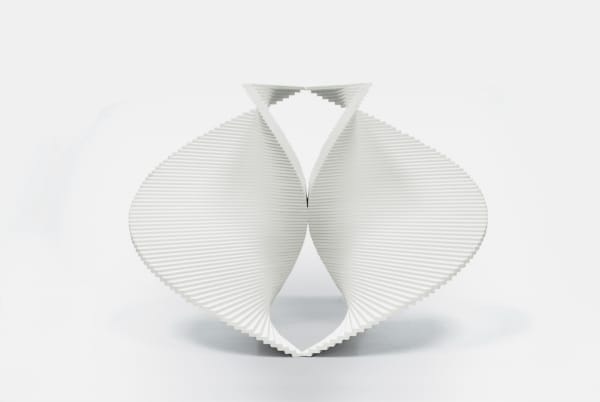




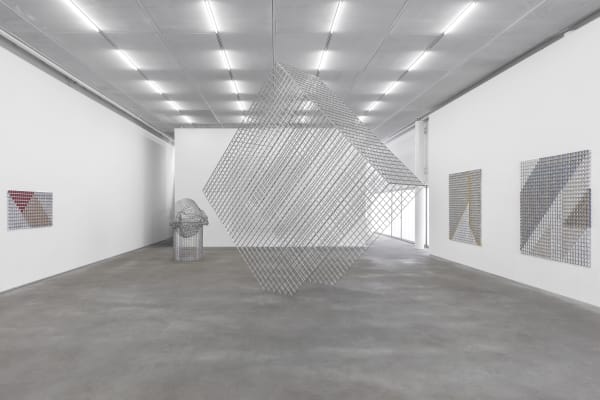


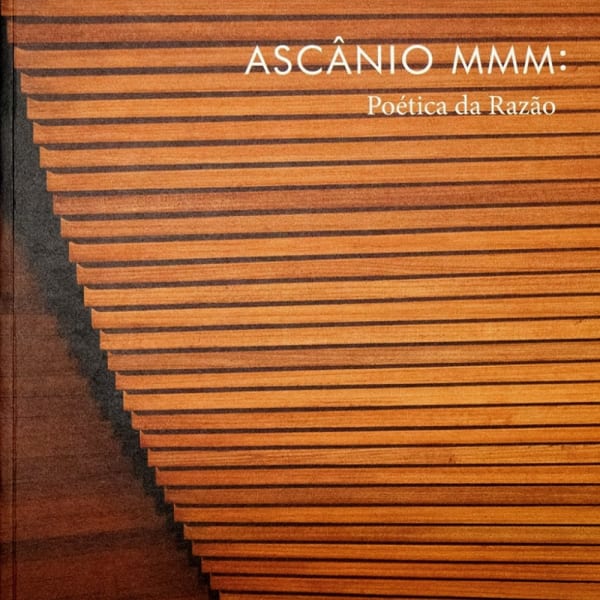


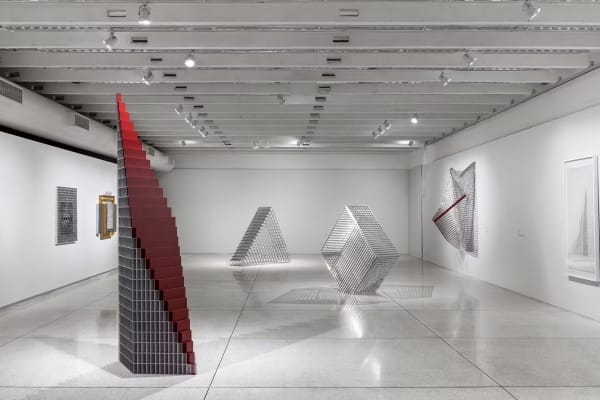





![Ascânio MMM . Praça da Sé [Public work]](https://artlogic-res.cloudinary.com/w_600,c_limit,f_auto,fl_lossy,q_auto/ws-artlogicwebsite0070/usr/images/news/main_image/215/ascanio_grande.jpg)

